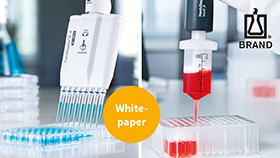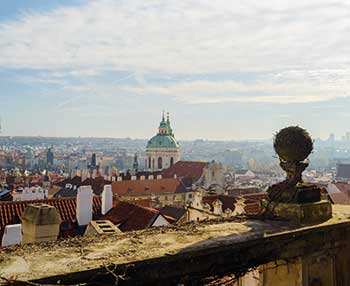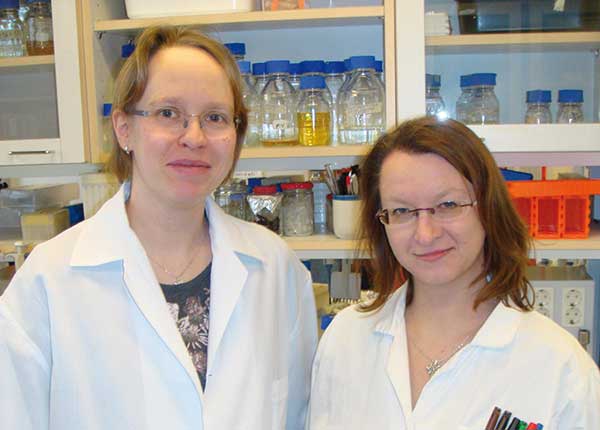From Finland to the Czech Republic
Career strategies for young European scientists
Interview: Kathleen Gransalke, Labtimes 02/2015
Page 1 | Page 2 | Page 3
LT: Did you receive any help from either university, your new group or EU programmes?
Johanna: Help has been very much needed since few people here speak good English, the authorities being no exception. We have had a lot of help in official and everyday life issues by Martina Satinska from the EURAXESS centre of the South Moravian Centre for International Mobility (JCMM). Office staff at the University as well as our super nice landlord have also helped us with many things. We have been very well taken care of!
Grit: The University of Helsinki provides general information, guidelines and checklists for working abroad. For detailed questions, the secretary responsible for my project was very helpful. My funding agency, Maj and Tor Nessling Foundation, also provided me with an information leaflet about coverage by the Finnish social security system and what to do during a research stay abroad. I also got help from both the group leader in Finland, Marko Virta, and the group leader in the Czech Republic, Tomáš Cajthaml, while writing the project application (tips and tricks, and invitation letter). And finally, Tomáš Cajthaml helped me with the accommodation; he reserved a room in an apartment owned by the institute.
LT: Who’s paying your salary?
Johanna: I am employed at the University and my salary is funded by the SoMoPro II programme (JCMM). The salary in this programme is quite high when compared to local researchers, nearly the level I would be paid in Finland. I think research funding with good salaries is very much needed to attract foreign researchers, especially those with family obligations, to countries with a lower salary level. Otherwise the costs of moving and having households in both countries can become an economical obstacle.
Grit: I receive a grant from the Maj and Tor Nessling Foundation from Finland.
LT: How easy or hard was the actual move? Johanna, you took your entire family with you...
Johanna: It was a big job! We took most of our things and furniture with us, since anyway we would have needed a lot of (kids’) stuff. And renting out a furnished flat is difficult in Finland. A moving company took care of packing fragiles and furniture and carrying everything in both places, which was an expensive but an excellent choice. We did the packing of other things and that alone was quite enough work already. The actual travel took three days, first by ferry from Helsinki to Germany and then driving to Brno by car. In line with Murphy’s law, our whole family was more or less ill during the trip but somehow we made it. And we managed to have some fun time, too (thanks to our mid-travel hosts in Cottbus)!
LT: How were the first days in your new home? Tell me a bit about Brno, Prague.
Johanna: The first days were mostly unpacking and trying to find our things among the mountains of boxes. On weekends we have managed to do a bit of sightseeing, too. Brno is a comfortable-sized city with a surprisingly lot of things to go and experience with kids. We have been swimming, ice skating, skiing, visiting parks, outdoor and indoor playgrounds, and shopping malls. As well as enjoying local foods and drinks!
Grit: I live in a shared flat owned by the institute, which made it very easy to make first contacts. Prague is a beautiful city; I did a lot of touristic activities during the first weekends, I went to the pub with my flat mates, close to the flat there is a forest with nice paths for running or walking… Prague is also only a 5-6 hour train trip away from my home city in Germany.
LT: What is the biggest difference between Finland and the Czech Republic, outside and inside the lab?
Johanna: Many foods in supermarkets are sold unpacked and fresh, like bread, cheese and meat products, which is really nice. But water is bought in bottles! Tap water is actually not even recommended for infants in some places due to nitrates. And it does not taste as good as back home in Finland. In the lab, everything is done by yourself, including dish washing and autoclaving. There are also no personal working spaces in the labs, so one has to clean everything after finishing an experiment. In addition to space, all lab equipment is shared, even pipettes. Generally, Czechs are not so different from Finns: we like similar sports, foods and free-time activities.
Grit: The lab organisation is very different. Here, lots of glassware is used, cleaned (by me) and re-used. In Finland, we used lots of plastic consumables, which were thrown away. Outside the lab, the biggest and most disturbing difference is that it is allowed to smoke in many pubs and restaurants. The most fascinating difference is the pečivo, there is a huge variety of fresh pastry – sweet temptations – and bread at the bakery stands.
LT: How’s the language barrier?
Johanna: There definitely is a language barrier. With officials it’s somewhat challenging. But, generally, young people speak English. A pocket dictionary is good to have, though.
Grit: It is more difficult to live in the Czech Republic without speaking Czech than living in Finland without speaking Finnish. Also at work, e.g. for communicating with the secretary or with the Institute’s physician, a colleague for translating is necessary. In the cafeteria, there are photos of the menu and then it is enough to point at the food and say “děkuju” (thank you).
LT: What do you miss most about Finland?
Johanna: Friends and relatives mostly. And sauna! My mother sends us a package every now and then with foodstuff and other things from home.
Grit: My friends and karjalanpiirakka (Karelian pirogs).
LT: What are you hoping to gain from this experience?
Johanna: Long-lasting memories and friends – of course! And also professional expertise, contacts and experience. So far seems very good!
Grit: Lots of experience, contacts, increasing my expertise... I hope to end up with a reliable analysis method, which will also work in Finland and that my research will result in publications.
LT: Do you have any tips for researchers thinking about spending time abroad?
Johanna: If you get a chance to go, take it! Be prepared to encounter some paperwork and financial challenges but you’ll survive. Go ahead and enjoy the adventure!
Grit: Start planning well ahead: establish contacts, make a research plan, apply for funding. Formulate milestones: what needs to be organised, until when and who will help you. Also plan visits home: even though there are technical advances such as video calls and social platforms, nothing can replace family and friends. Based on my experience, the first wave of acute homesickness will come after 3-4 months. And never underestimate the struggles you can have with bureaucracy, even within the EU. However, it is a great opportunity to go abroad, take it!
Johanna Rajasärkkä (left) did her PhD at the Department of Food and Environmental Sciences at the University of Helsinki, graduating in 2013. In her PhD project, she developed bioreporter assays to monitor bisphenol A and measure endocrine disrupting compounds in environmental samples. Since November 2014, she’s been with the Masaryk University, Brno.
Grit Kabiersch (right) also did her PhD studies at the Department of Food and Environmental Sciences at the University of Helsinki. Her PhD thesis, published in 2013, is about fungal tools for the degradation of endocrine disrupting compounds. Grit started her international project in March last year. Since November, she’s been doing research at the Academy of Science of the Czech Republic in Prague.
Page 1 | Page 2 | Page 3
Last Changed: 25.03.2015








